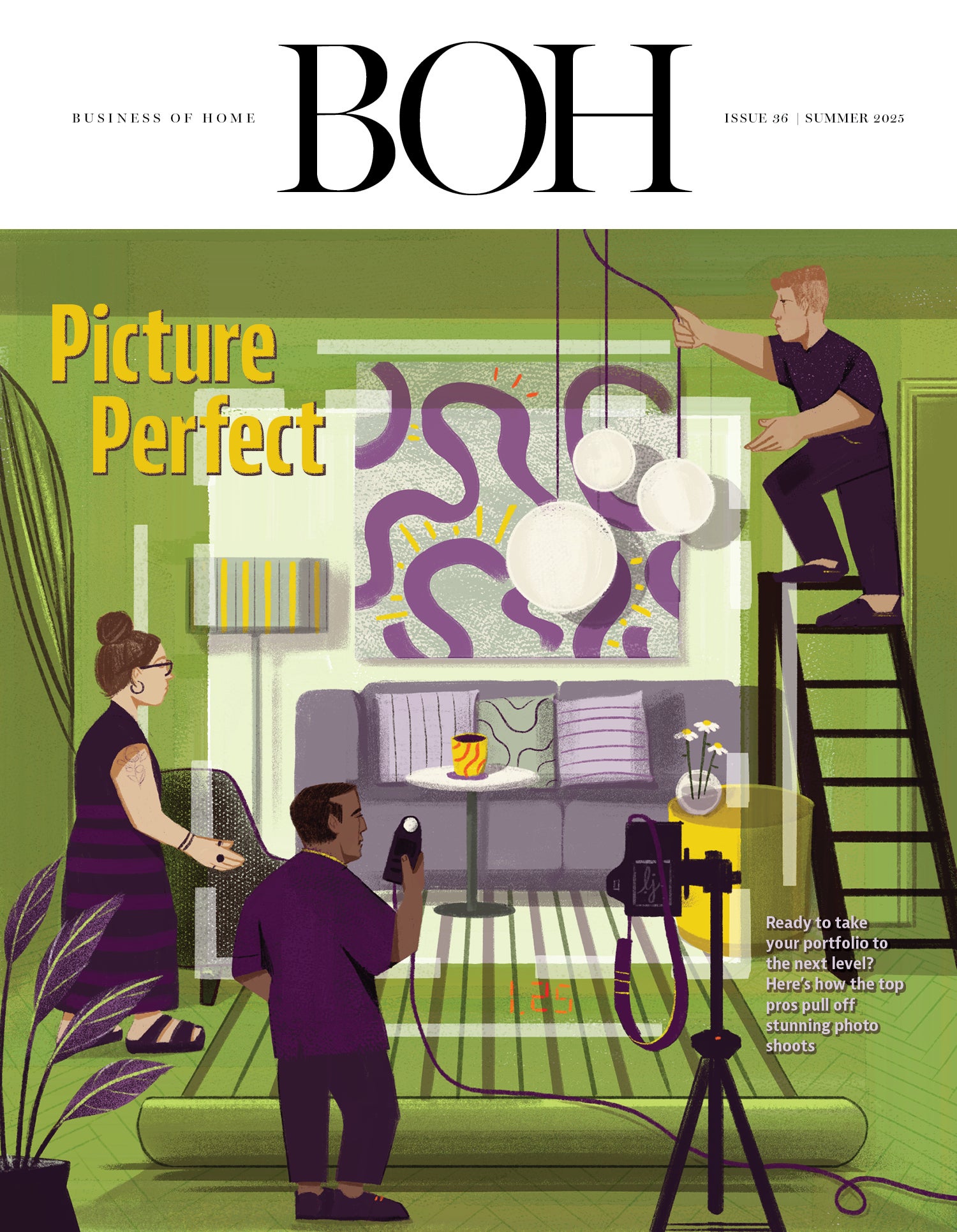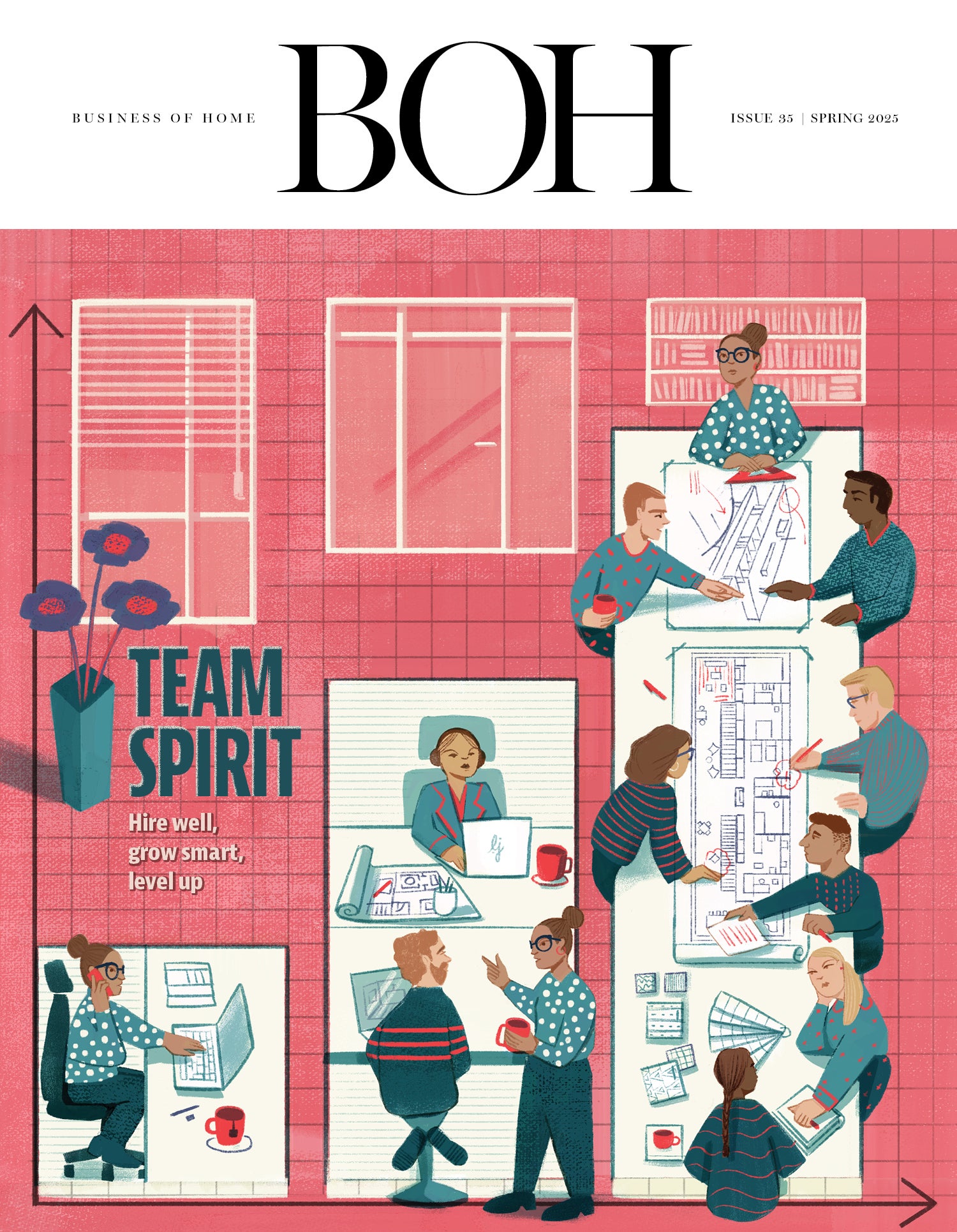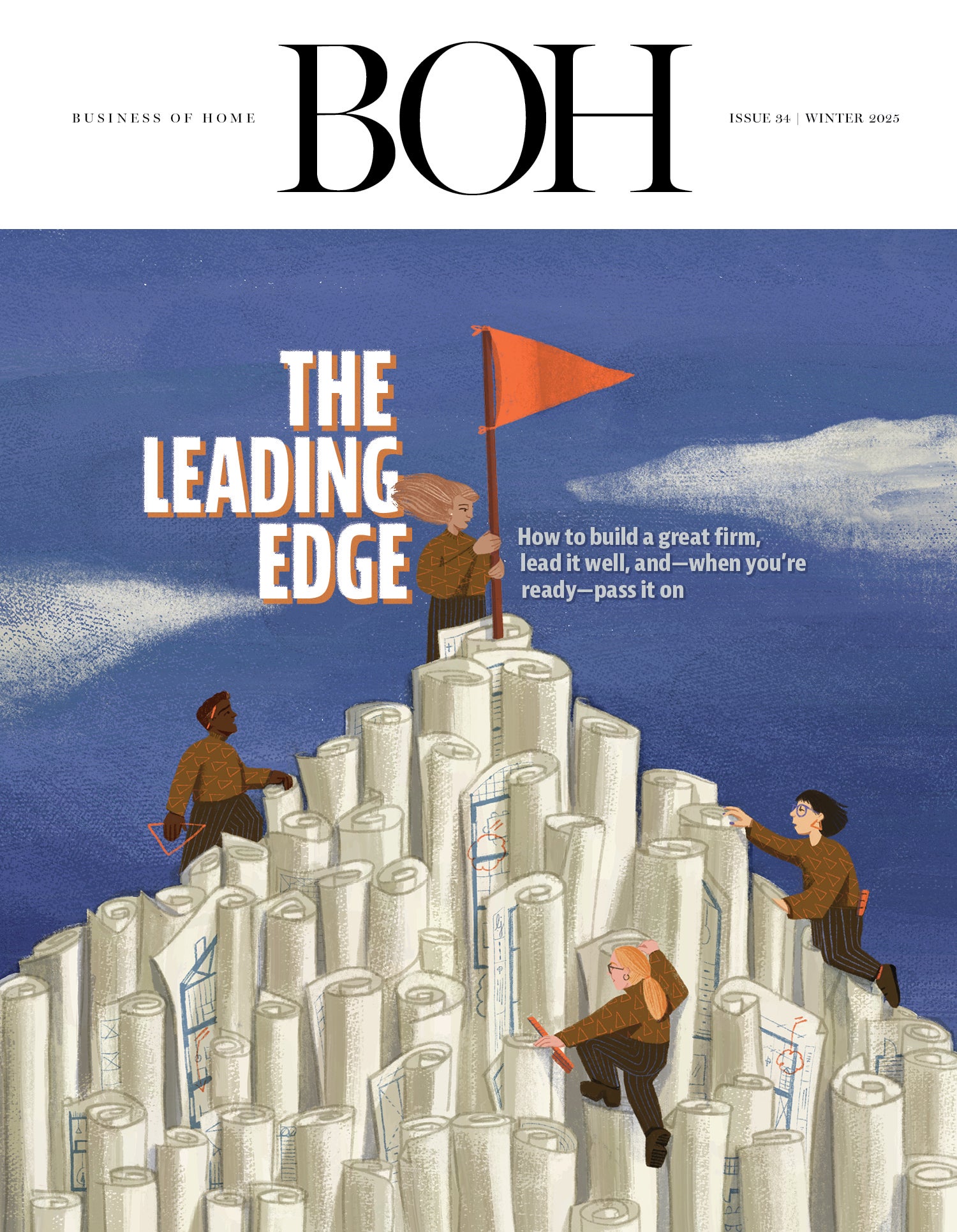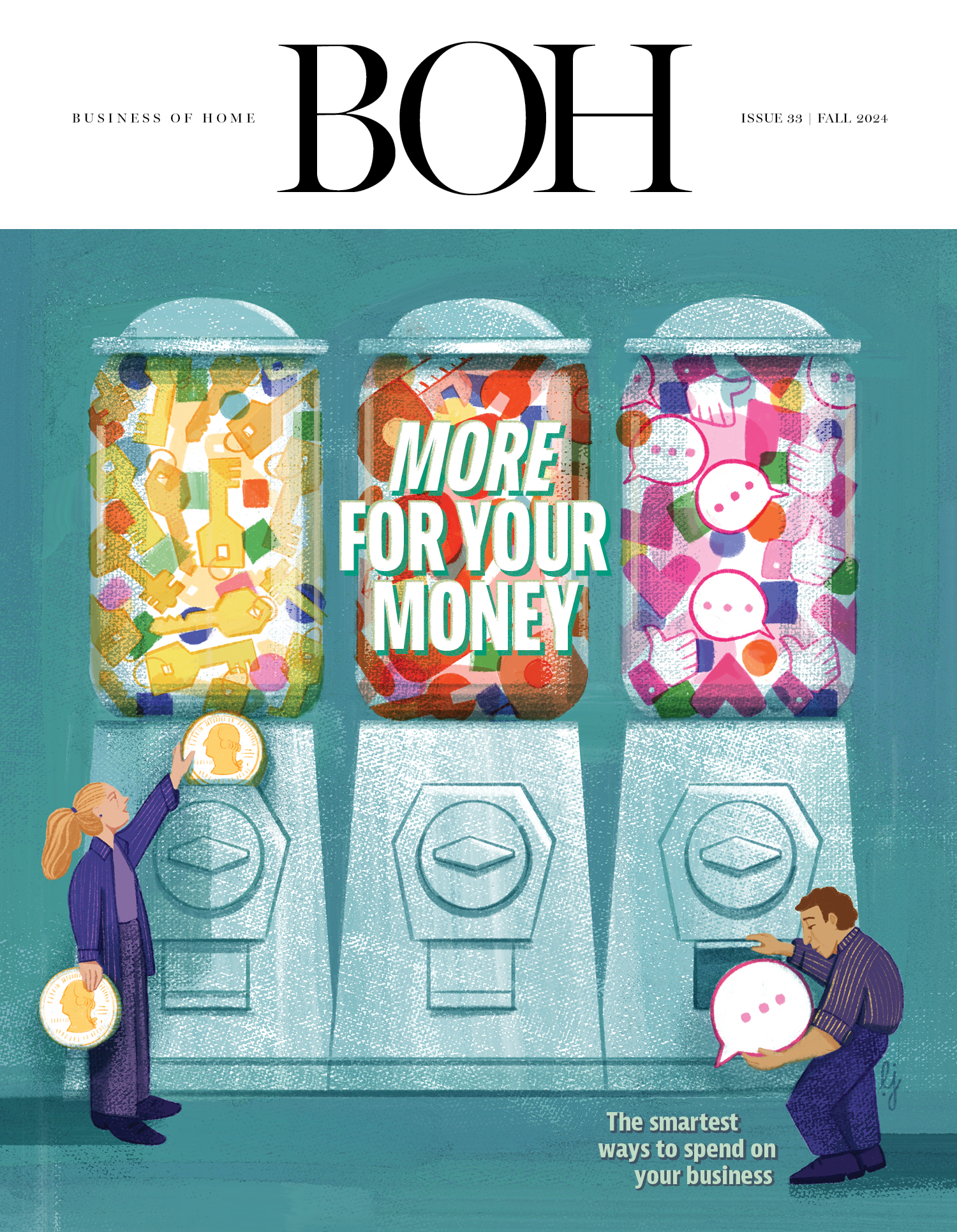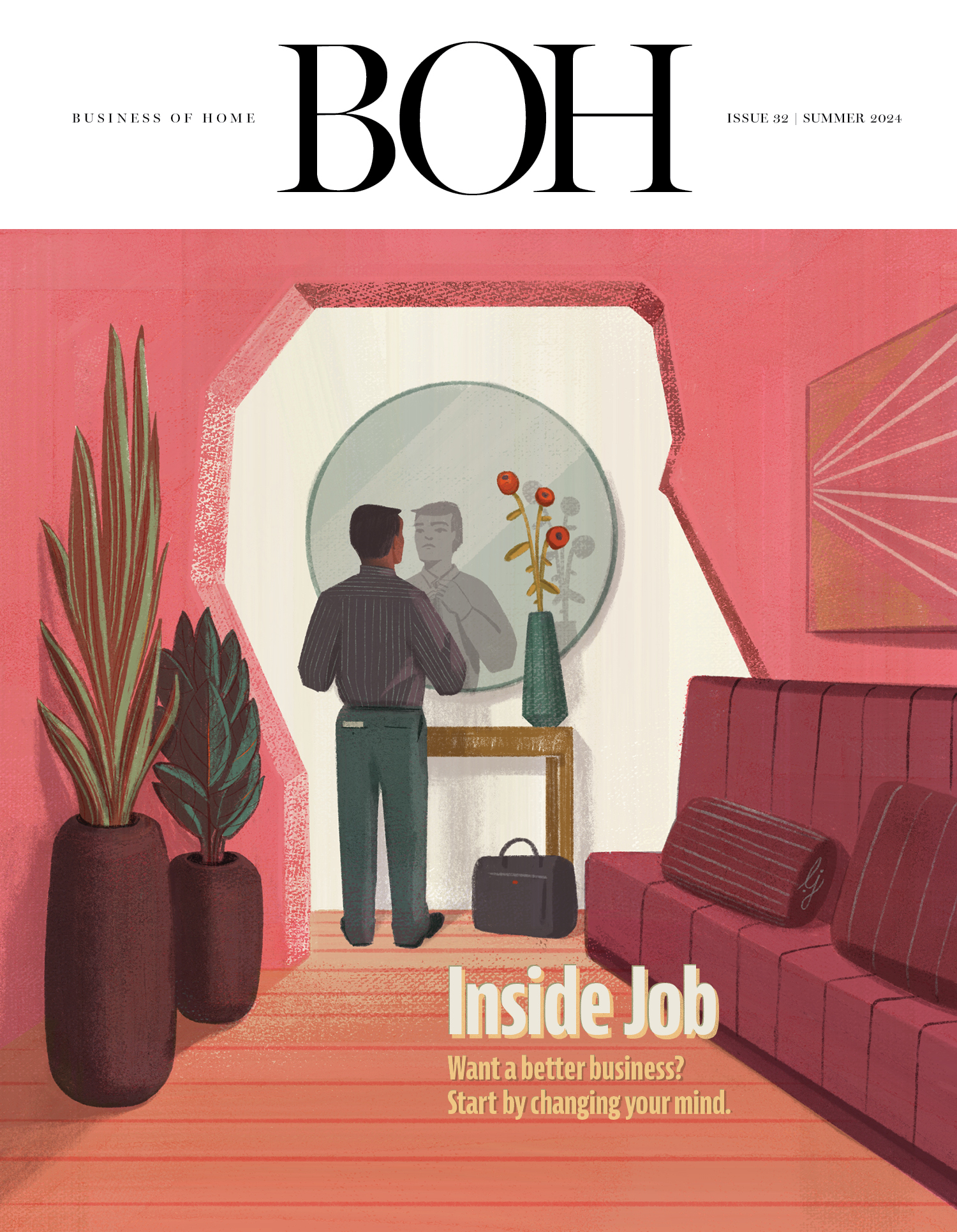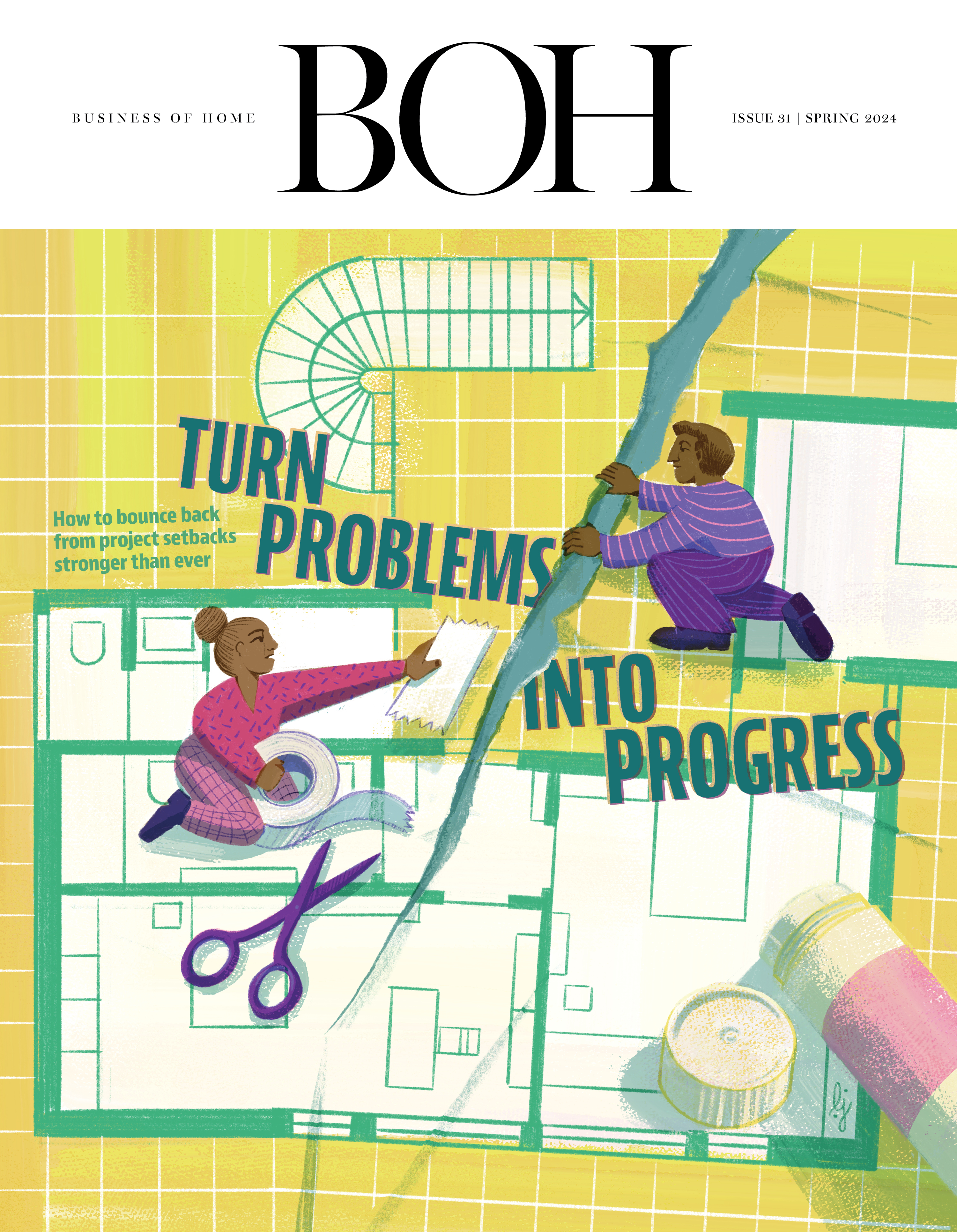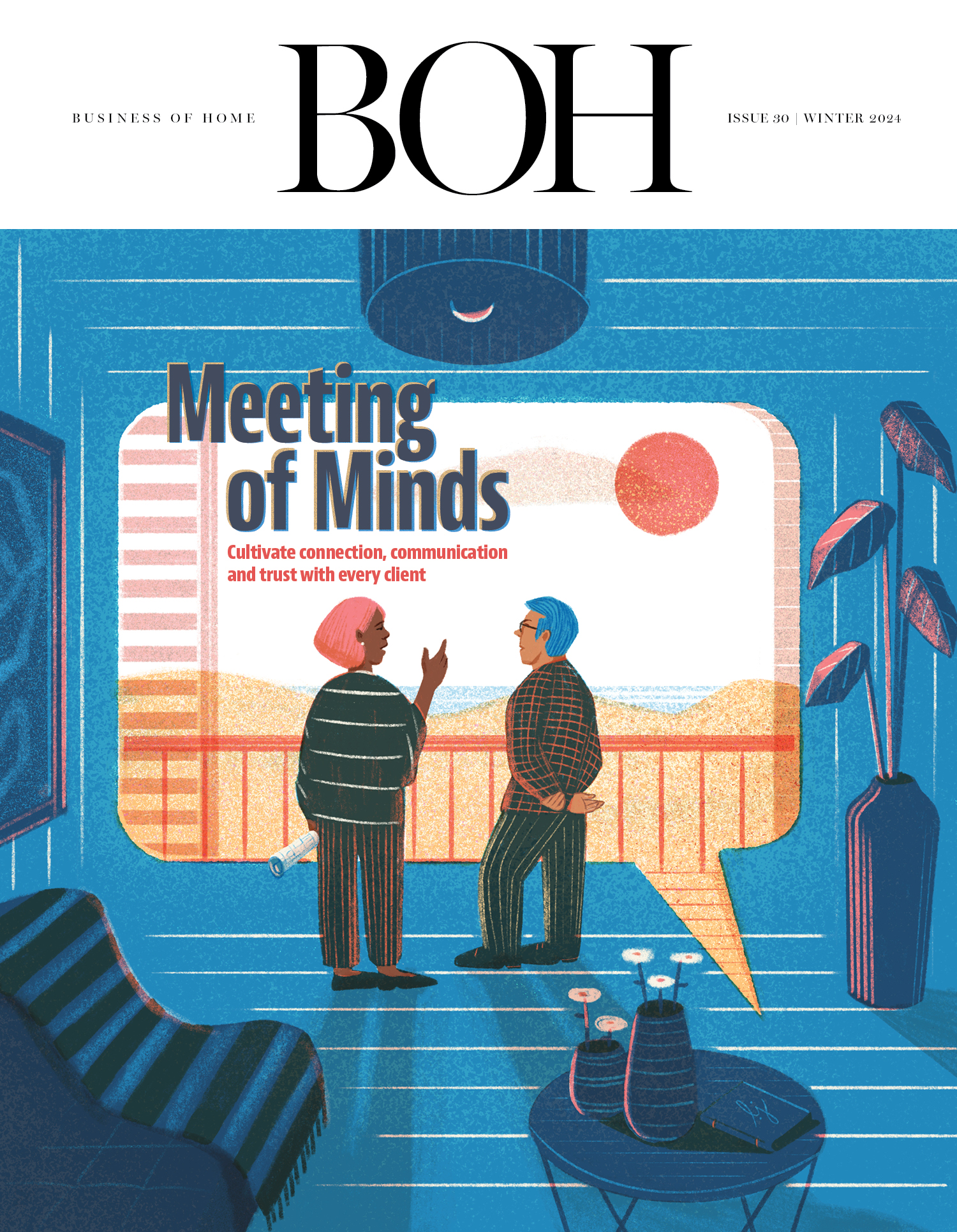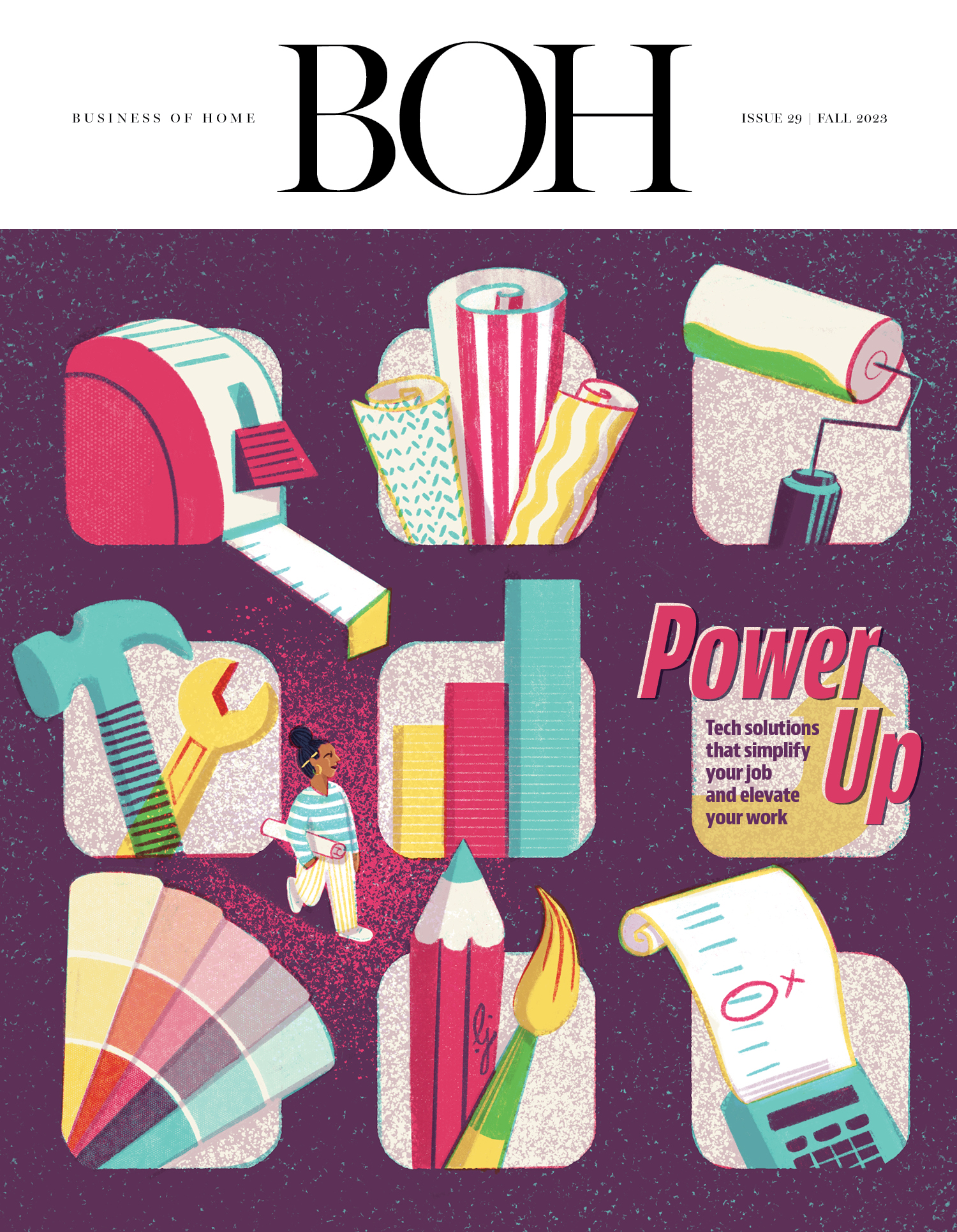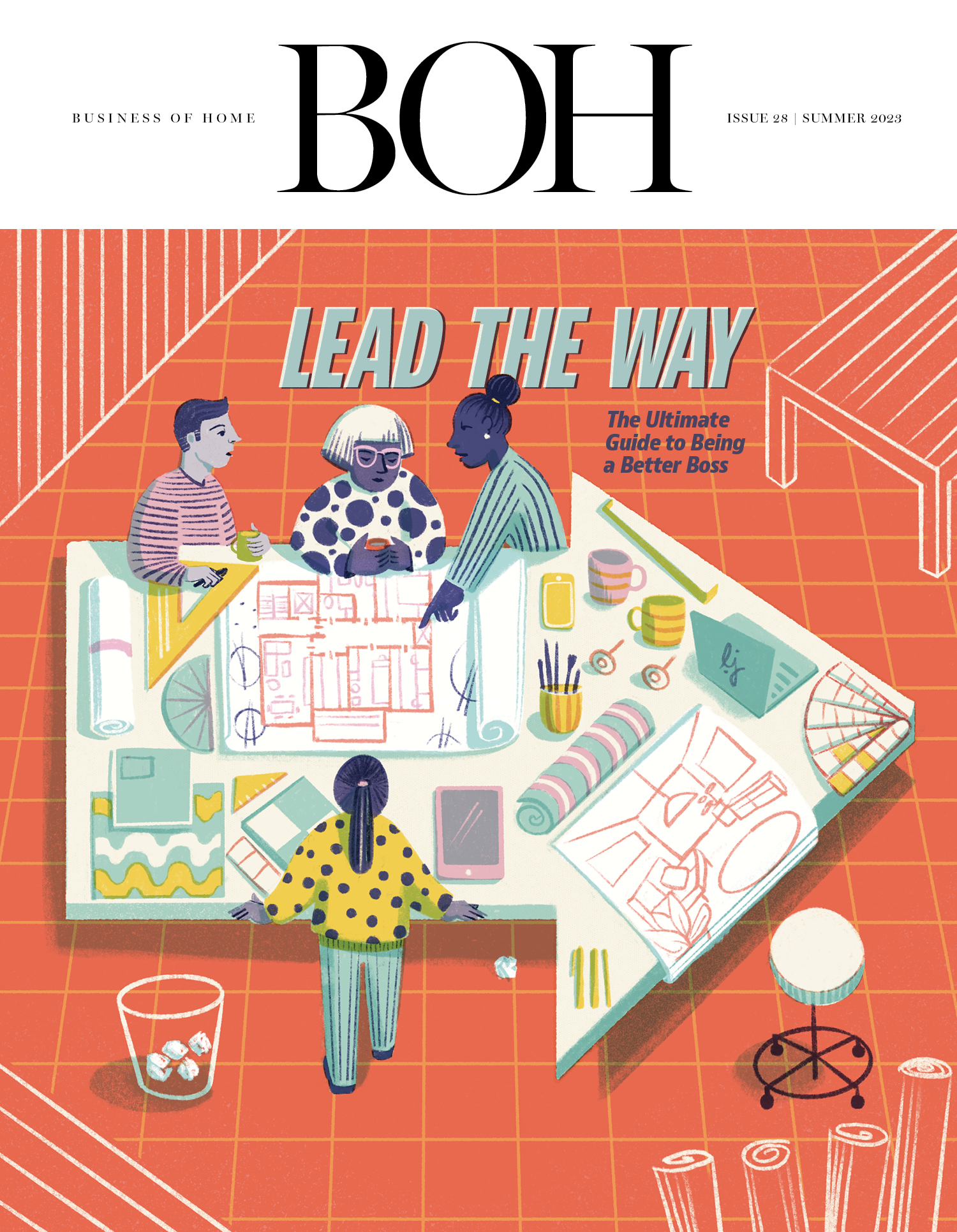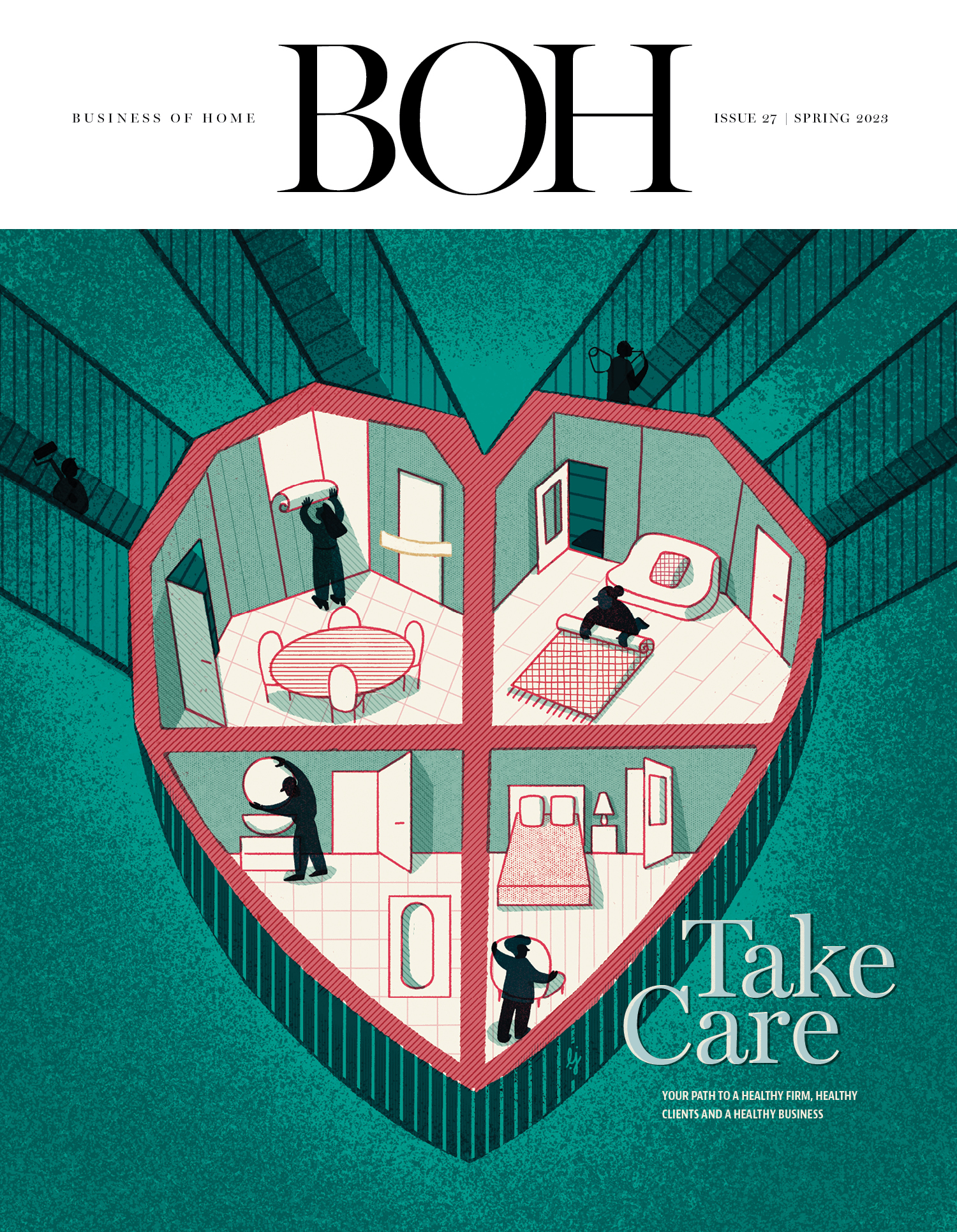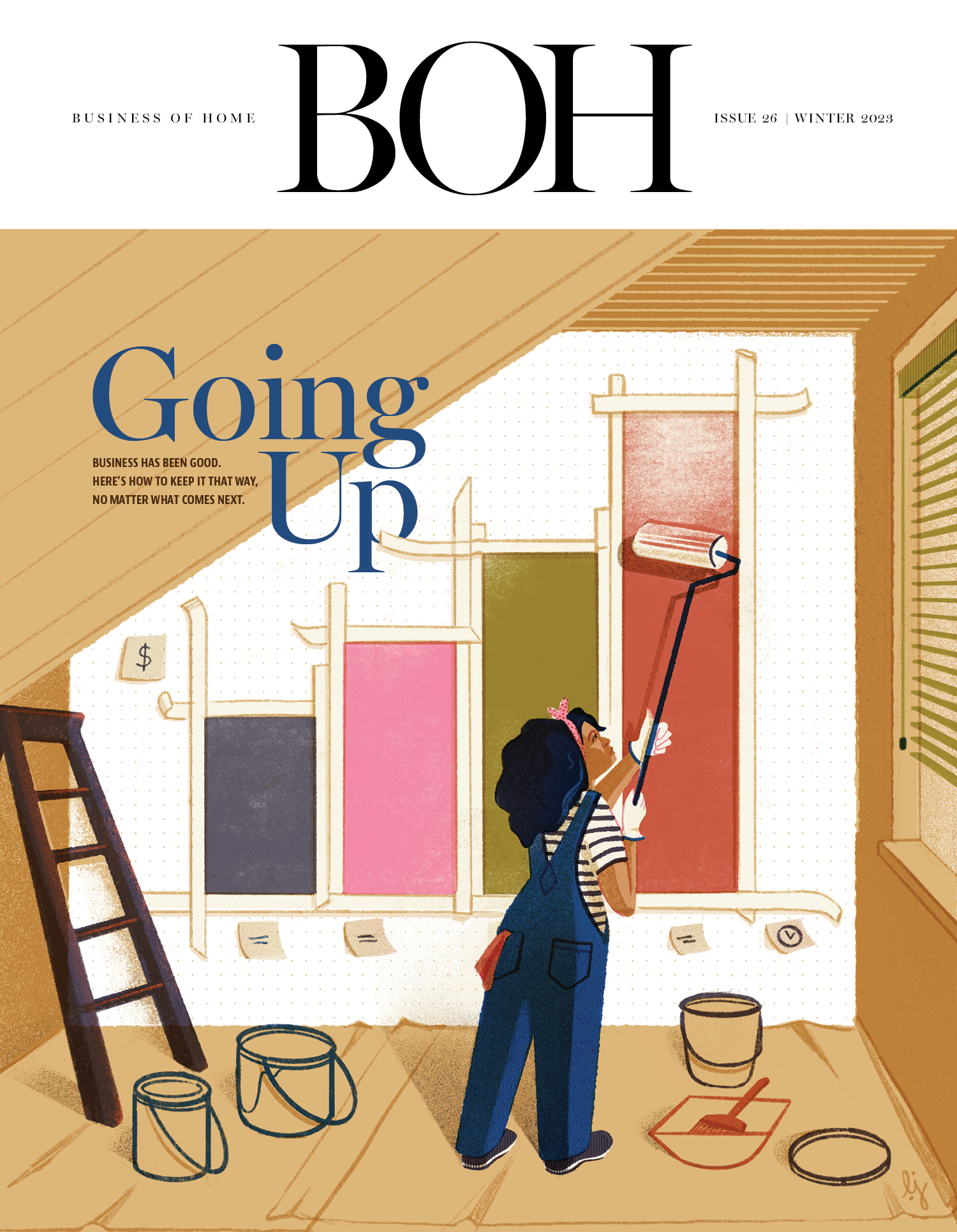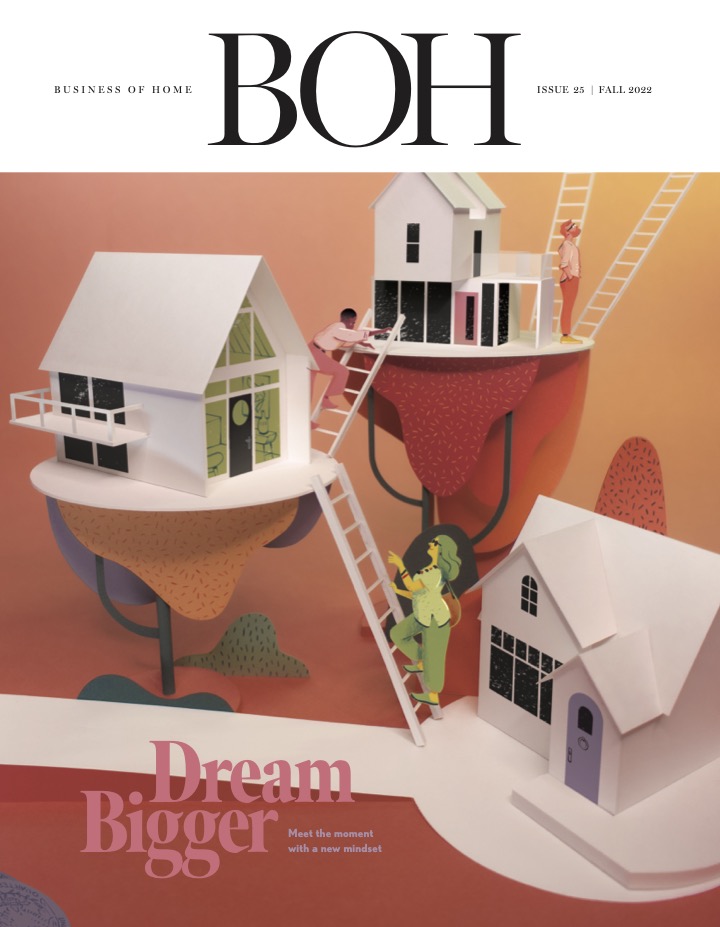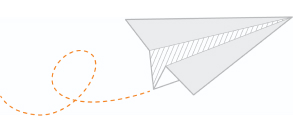In Business of Home’s series Shop Talk, we chat with owners of home furnishings stores across the country to hear about their hard-won lessons and challenges, big and small. This week, we spoke with interior designer and retailer Leah Bailey of Leah Bailey Interiors, which has shops in Savannah, Georgia, and Bluffton, South Carolina.
Though she’s been an interior designer since 2000, it wasn’t until July 2020 that Bailey opened a small storefront in Bluffton, which is in the Hilton Head Island area. She maintained her base in her hometown of Savannah, where she launched a shop two years ago. In our chat, she was happy to dive into the nitty-gritty, including the benefits of adding apparel and investing in Google ads, how she pays her staff, why she divided up her social media accounts, and what she wants from a third location.
How would you describe your aesthetic generally?
My personal aesthetic is heavily influenced by European layering—vintage finds mixed with new, properly proportioned pieces. If I put an antique chair in a space, it’s going to be reupholstered to feel more current. And I like a lot of crusty and chipped elements throughout the space. It was important to me that the shops felt like my personal style, because a lot of people are intimidated by that layering effect. Too many times, you go into a store and everything’s brand-new; [that makes you feel] like you can go to HomeGoods and get something similar, which I wanted to avoid. I didn’t want it to be like shopping online or at a chain.
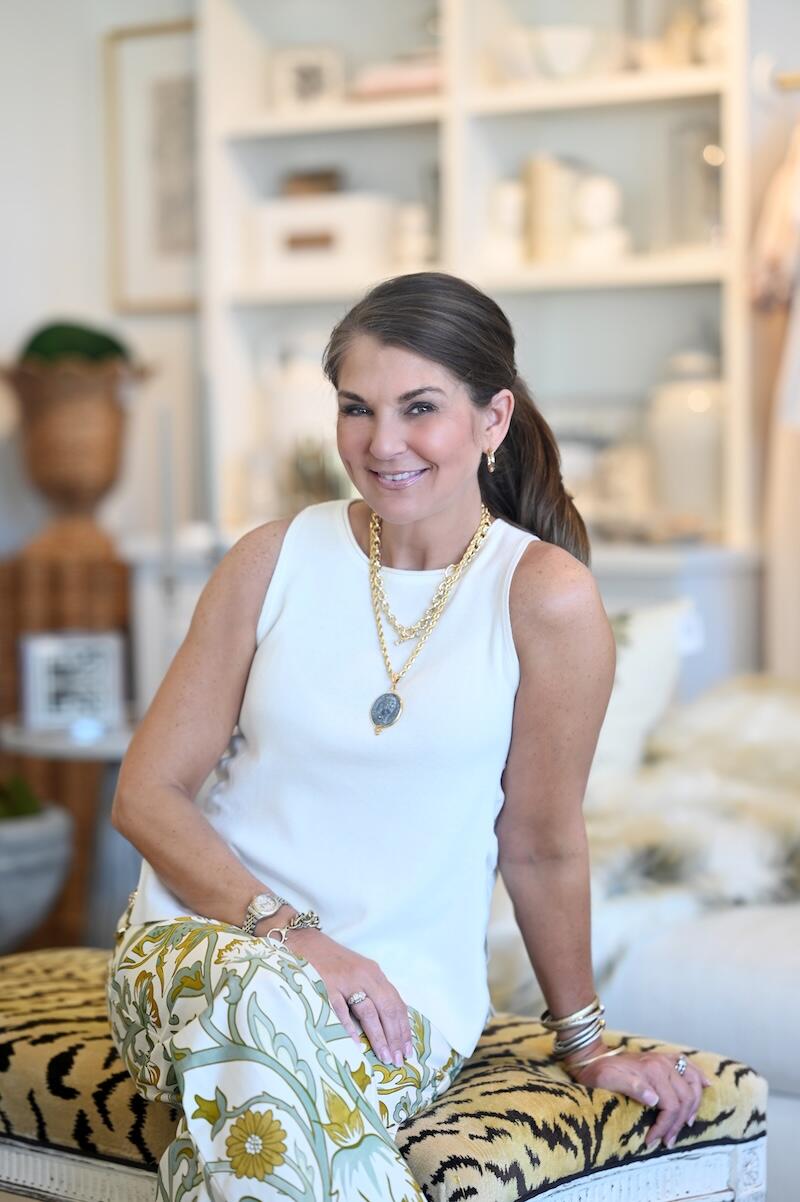
You live in Savannah, but your first store location wasn’t there. How did you come to open your Bluffton shop?
For about 20 years, I’ve been working [on design projects] in Palmetto Bluff, an exclusive, gated community in Bluffton. It’s about 15 minutes from downtown Bluffton, which is a really sweet, small, historic coastal community. It was, for the most part, revived and brought back to life about 15 years ago, with tons of restaurants and coffee shops, boutiques, and shops like mine. Tourists come in the summer—it’s about 30 minutes from Hilton Head, 30 minutes from Savannah, 15 minutes from Palmetto Bluff, so it’s centrally located, getting people from all over—though definitely not as much of the trade. I have a handful of designers who come in to purchase for installs, but it’s 70 percent regular locals and 30 percent walk-ins or tourists.
Why follow up with a second shop in Savannah when you did?
My design studio is based out of Savannah, and I was growing my design firm here, adding more junior designers and more assistants, when the huge space next door to my studio became available. So after opening the shop in Bluffton in 2020, I opened the second Savannah-based retail location in March 2023. I refer to Bluffton as the jewel box because it's teeny—the actual footprint is not even 1,000 square feet—whereas in Savannah it is about 3,000 square feet. I’m able to have larger pieces of furniture in Savannah, and to bring in new, upholstered pieces. So it was also an opportunity for customers and clients in Bluffton: If they needed to sit on pieces of furniture, they could come to Savannah.
Is the look the same across the two shops?
There is a lot of cohesiveness. All of my built-ins, the lights over the built-ins, as well as big central light fixtures, are exactly the same. One thing that we added to the Bluffton shop, which has carried over to the Savannah shop, is apparel. I was helping some friends in Savannah during Covid who had an apparel shop, and they were just dead in the water. Twice a month, I would have them come over to Bluffton and we would do a one-day pop-up with champagne, just to get people out of the house. But then people were coming three or four days later, wondering where the clothes were. I realized that there was an opportunity, so I started picking up apparel lines that I wore all the time. Now both shops carry apparel. It's become a big lifestyle [destination]. Once I started understanding the apparel part, my theory was that no one should leave here empty-handed, whether it’s a pair or earrings or a candle or ginger jars.
How did you harmonize the apparel and the home goods offerings?
The apparel needs to feel like it’s part of the interior. It’s been trial and error: Some brands might have a great drop in spring, but then their fall drop is horrible. The other thing was price point. Not everyone is going to come in and buy a $450 dress. They want more in the $200 range. So I had to find multilevel brands, and this was done by going to different shows in different areas. I went to Atlanta for market, then found some great stuff in Dallas.
Tell me about a favorite vendor of yours.
I bring a lot of antiques into the shop, and antique dealers are my favorite type of vendor, because those [pieces] make the shop feel so special. They’re all one of a kind, not reproductions. I also go to Round Top twice a year, and now customers and clients are always looking forward to what I get there.
What’s a product that flies out the door?
We do a very heavy load of candles. I have my own scent, and that’s probably our number-one [product]. It’s priced great, it’s a clean burn, it’s packaged beautifully. I sell a ton of ginger jars. We do a lot of tabletop and barware: pretty coasters and bottle openers, cocktail napkins. Again, I think it’s a price-point thing. From an apparel standpoint, dresses are our number one. I think it’s because we’re in the South, and it’s easy.
What is your general approach to sourcing?
Because I’ve been in design for 25 years, I am privy to a ton of wholesale accounts, which was extremely helpful when I opened the first shop because I was able to just tap into those immediately. Now we use a lot of those accounts, but Faire has been an awesome tool for us, mainly because I can go there and just type in “mini convex mirror” and then dive in to see what quality looks the best. Faire has changed the way we purchase at wholesale without it looking cheap.
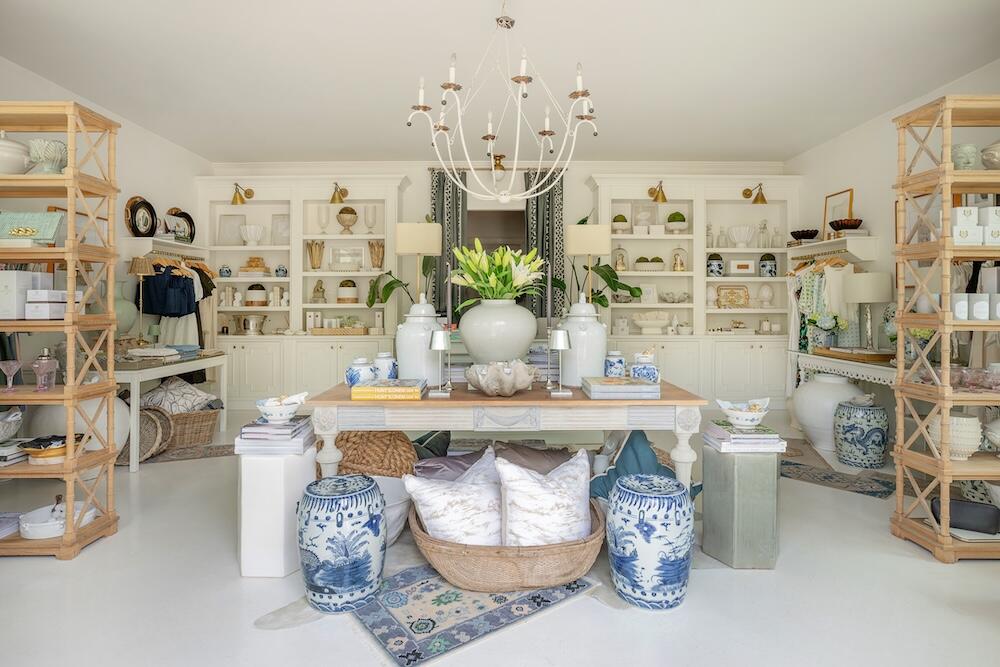
How do you handle e-commerce?
As [my team] receives product, they input everything into Shopify with all of the details. Pretty much everything in the shops is on the e-commerce site, from cocktail napkins to Hanky Panky underwear. What we have found about e-commerce is that you have to pay to play. We pay a lot of money, month to month, through Google. For a long time we weren’t getting any orders, and then we figured out if you run Google ads, you get placement on Google, and it boosts sales enough to pay off at least twofold. It’s completely worth it. We also do a lot on Instagram—the combination of Google and Instagram [marketing] is how we’re getting it going.
Yes, how big a role does social media play in your business? And who manages it?
I have an in-house team member who handles all of the social with the shop manager. When I started the shop, I did not separate my design Instagram from the shop Instagram because I had a decent following and didn’t want to lose that traction. Then we opened up the Savannah shop, and with that and the Bluffton shop and my design business, it started getting confusing. We finally separated them, and it’s the best thing we could have done.
How have you gone about hiring staff across these three businesses?
I pay my people really well, and I think that’s where it starts. A lot of people in retail don’t get paid well, and I think that’s why they burn out or they’re late for work or their interaction with the customer is not great. If [my staff] needs health benefits, I give ’em health benefits, and they get a very nice commission. I don’t cap commissions: If they make more money, that means the shops are making more money. The same goes for my designers [on the interior side of my business]. Generally, when I’ve had turnover, it’s because someone is moving away, not because it was a bad fit or they did something wrong. Currently, there are 18 of us between the shops and the design studio.
It’s hard to find good people, and it’s hard to find someone passionate, who takes initiative. I’m not a hard person to work for, but if I ask you to do something and you don’t, it’s a problem. I’m not going to ask you to do something that I wouldn’t do myself. This morning, we did a big shop flip and I was in the middle of it, moving furniture, vacuuming. I’m not sitting back, pointing and telling people what to do. But it’s hard. People put their best foot forward when they’re interviewing, and I’m usually a pretty good judge of character, but I tell them upfront: You’re going to get paid well, but you’re going to work really, really hard. You’re going to have to take the trash out and clean the toilets, but you’re also going to take pride in what you do.
What are some of the difficulties of working in your area?
Savannah is probably more difficult than Bluffton. There’s more money in Bluffton, and the location is walkable. Women might go out for lunch, then they’ll walk around and shop. The location of the Savannah shop is Midtown; the downtown is more walkable, but a lot of locals don’t go downtown because parking’s kind of a nightmare. So I chose Midtown because I could get more of that local, weekly crowd. Savannah people don’t like to spend as much money. Retail in general is a challenge, especially this past election year. Our sales historically go down in the summer because people travel. We’re able to understand the patterns. But if I had to write a business plan for retail, it would all be a lie: You can’t determine what the climate is going to feel like. All you can hope is that you’re buying the right things.
What are some of your dreams for the future of the business?
My hope is to open a third location, and we’ve been looking at [potential places] for about two years—mainly because that location needs to do well. It’s a huge financial undertaking, but I also want to be able to offer design services. So we’ve been doing a lot of research. Are there new high-end communities that could be close to the shop? There’s definitely a science to it. I have a cashmere apparel line we branded last fall, and that’s doing really well. We are also working on a blazer line, so that’s super exciting. It’s always a dream, I think, for a designer to have some type of a line with a furniture company, or fabric or lighting. Hopefully that can happen. But at the end of the day, I just want to make sure that my name remains positive in the industry, and that clients and customers are coming to us because it’s not a stale environment. We are making sure things are really beautiful, and that people love what they’re walking into.
How do you manage your schedule across all the businesses?
My design clients’ schedules really dictate how I manage my week. That sets the tone for what I can and can’t do within the business. We have a team meeting every Tuesday for an hour, and I do my best not to miss it. When I’m prepping for client meetings, I am more available. If my financial controller needs me to come and sit with her for 30 minutes to go over some financial stuff, I’m able to do it. So my days are different every day, my weeks are different every week. Looking at my schedule right now would probably put someone into a full-blown seizure, but I am very high-functioning. I’ve got a lot of energy. I like to get as much done as possible, very type A, but I like to have fun too.
What’s your favorite kind of day in the shops?
Probably doing a shop flip. When customers and clients come in after a shop flip, we may have a piece of furniture for three months that got no attention, and then we redesign the space and people think we bought something new. That’s the thing about design! Moving things around, giving them a new space to shine their light. That’s what I enjoy most, because my team is also a part of it and I get to watch their creativity, and how they make it look beautiful with me.



